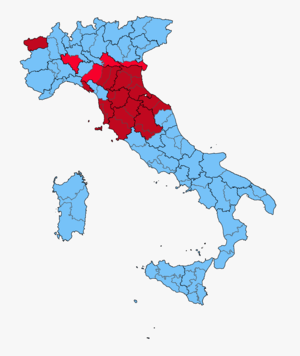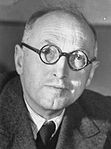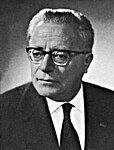Italian general election, 1946
|
|
|||||||||||||||||||||||||||||||||||||
|---|---|---|---|---|---|---|---|---|---|---|---|---|---|---|---|---|---|---|---|---|---|---|---|---|---|---|---|---|---|---|---|---|---|---|---|---|---|
|
|||||||||||||||||||||||||||||||||||||
|
All 556 seats to the Italian Constituent Assembly |
|||||||||||||||||||||||||||||||||||||
| Turnout | 89.1% | ||||||||||||||||||||||||||||||||||||
|
|||||||||||||||||||||||||||||||||||||

Legislative election results map. Light Blue denotes provinces with a Christian Democratic plurality, Red denotes those with a Communist plurality, Salmon denotes those with a Socialist plurality.
|
|||||||||||||||||||||||||||||||||||||
|
|||||||||||||||||||||||||||||||||||||
Alcide De Gasperi
Christian Democracy
Alcide De Gasperi
Christian Democracy
General elections were held in Italy on Sunday June 2, 1946. They were the first after World War II and elected 556 deputies to the Constituent Assembly. Theoretically, a total of 573 deputies were to be elected, but the election did not take place in the Julian March and in South Tyrol, which were under military occupation by the United Nations.
For the first time, Italian women were allowed to vote in a national election. Electors had two votes: one to elect the representatives and one to choose the institutional form of the state.
To emphasise the restoration of democracy after the fascist era, a pure party-list proportional representation was chosen. Italian provinces were united in 31 constituencies, each electing a group of candidates. At constituency level, seats were divided between open lists using the largest remainder method with the Imperiali quota. Remaining votes and seats were transferred at national level, where special closed lists of national leaders received the last seats using the Hare quota.
At the end of World War II, Italy was governed under transitional laws as a result of agreements between the National Liberation Committee (CLN) and the royal Lieutenant General of the Realm Humbert II. As no democratic elections had taken place for more than 20 years, legislative power was given to the government but, after the first election, the Italian Council of Ministers would have to receive a vote of confidence by the new Constituent Assembly.
...
Wikipedia



